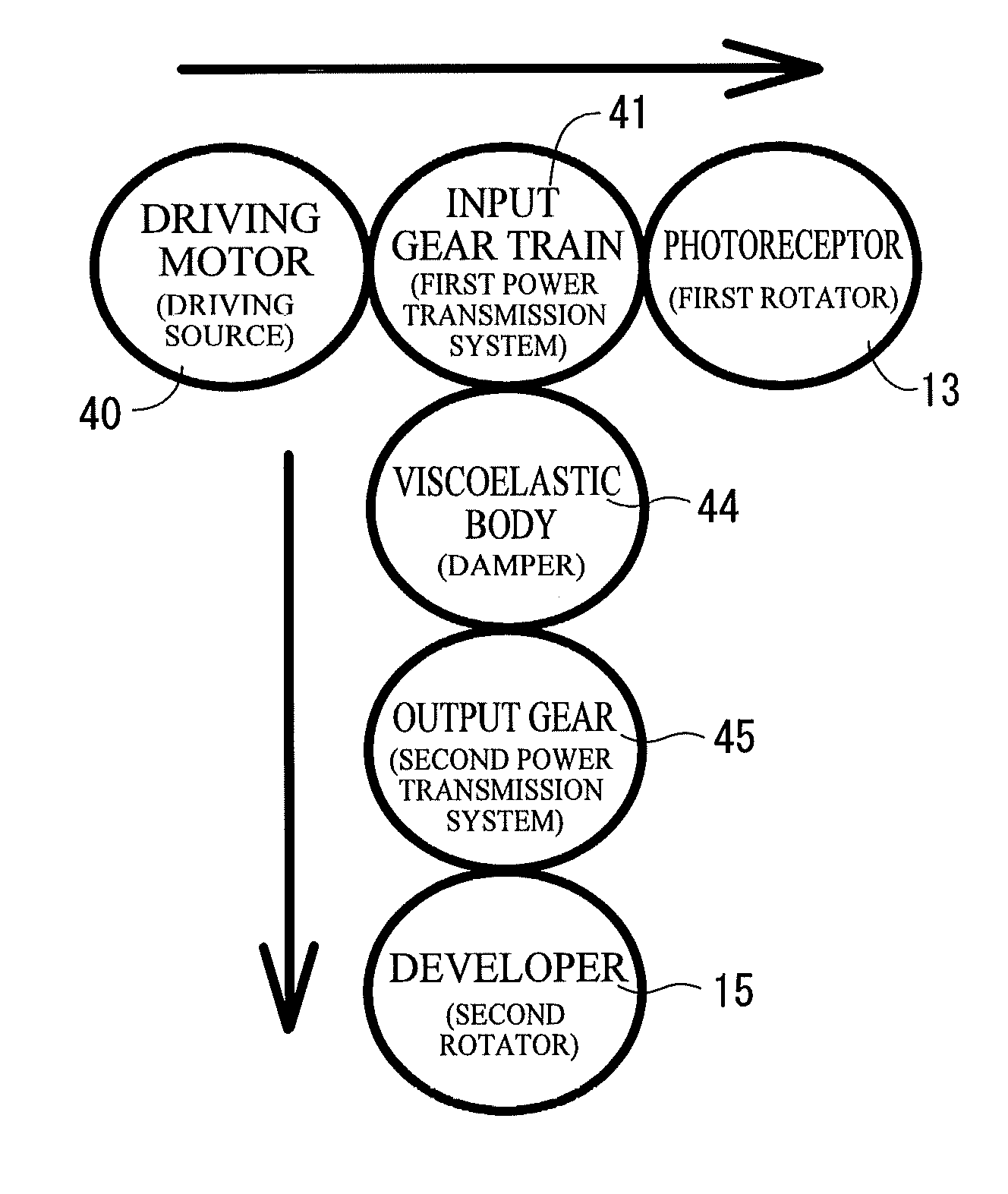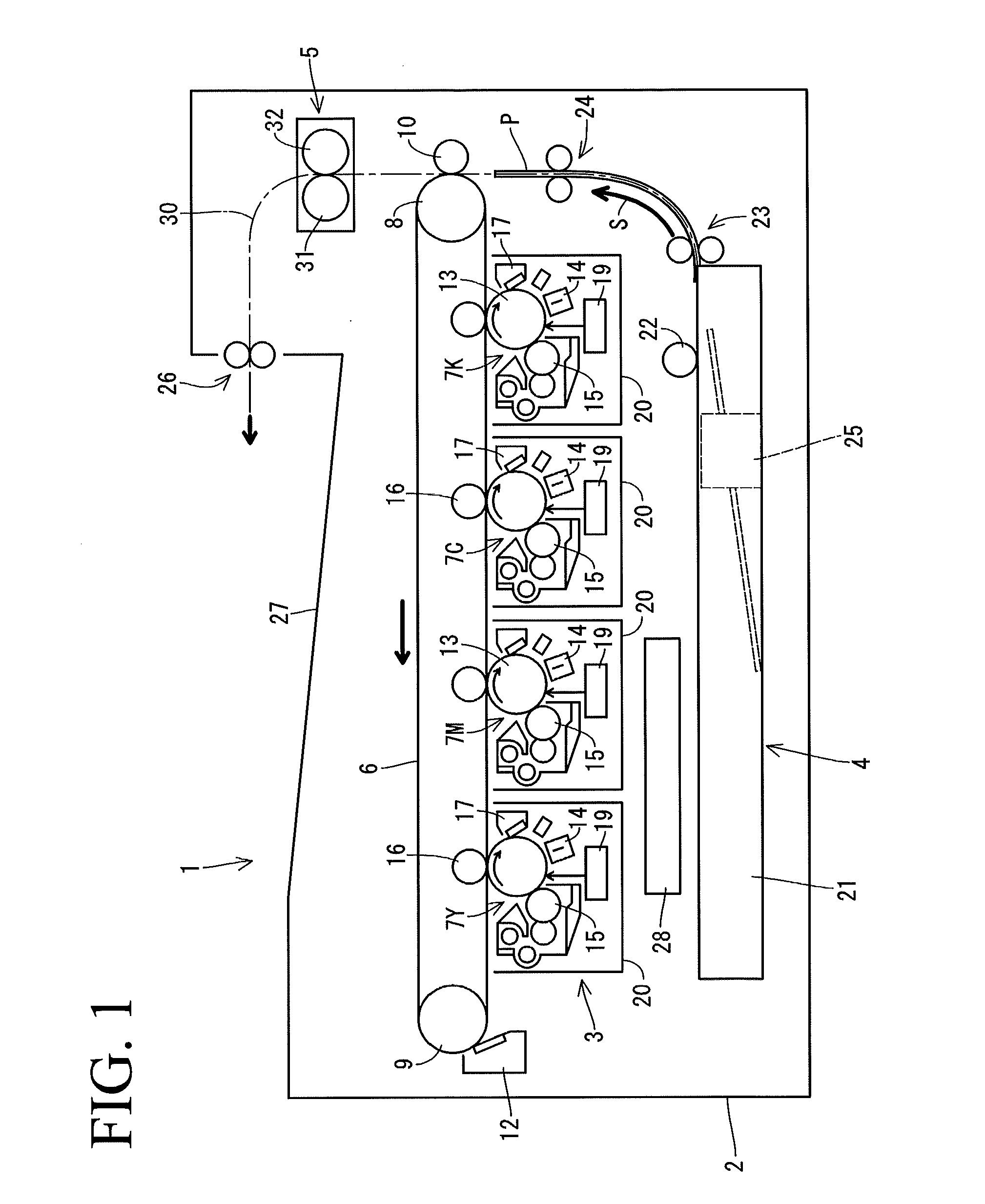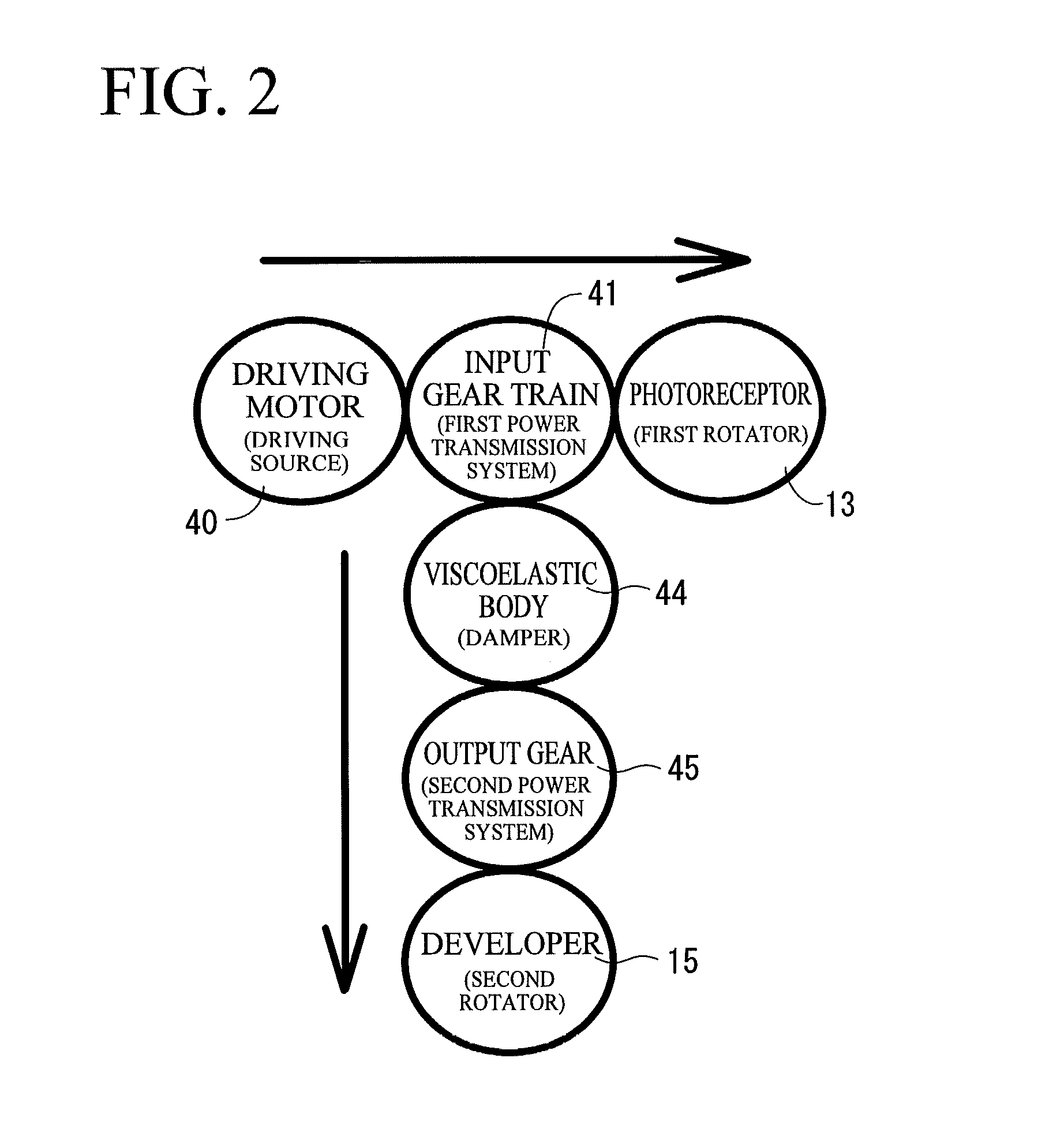Image forming apparatus
a technology of forming apparatus and image, which is applied in the direction of electrographic process apparatus, instruments, optics, etc., can solve the problems of degrading image quality, photoreceptors are likely to be affected by varying loads on the developer during visualization,
- Summary
- Abstract
- Description
- Claims
- Application Information
AI Technical Summary
Benefits of technology
Problems solved by technology
Method used
Image
Examples
first embodiment
(2) First Embodiment of Power Transmission Structure, Directed to Image Forming Unit
[0034]Referring to FIG. 2 and FIG. 3, a first embodiment of a power transmission structure directed to the image forming unit 7 will be described below. The printer 1 includes, on a side of the casing 2, a driving motor 40 serving as a driving source to generate power. In the first embodiment, the power generated by the driving motor 40 is branched into two directions, namely, to the photoreceptor 13 serving as a first rotator and to the developer 15 serving as a second rotator (see FIG. 2 and FIG. 3).
[0035]The power generated by the driving motor 40 is first transmitted to an input gear train 41 serving as a first power transmission system. The input gear train 41 meshes with a photoreceptor gear 42 coupled to a rotary shaft 13a of the photoreceptor 13, to transmit power to the photoreceptor gear 42. Thus, the photoreceptor 13 integrally rotates with the photoreceptor gear 42. An output branching ge...
second embodiment
(3) Second Embodiment of Power Transmission Structure, Directed to Image Forming Unit
[0047]Referring to FIG. 8 and FIG. 9, a second embodiment of the power transmission structure, which is directed to the image forming unit 7, will be described. In the second embodiment, the power generated by a driving motor 50 is transmitted to the photoreceptor 13 and the developer 15 in this order (see FIG. 8). A photoreceptor gear 52 is a component of the second power transmission system and is unremovably secured to the rotary shaft 13a of the photoreceptor 13. A viscoelastic body 54 serving as a damper is provided between the photoreceptor gear 52 and the rotary shaft 13a. An input gear train 51 serving as the first power transmission system meshes with the photoreceptor gear 52 to transmit power to the photoreceptor gear 52. The photoreceptor gear 52 is power transmittably coupled to the developer 15 through an output relay gear 55. The viscoelastic body 54 may be similar to that in the firs...
third embodiment
(4) Third Embodiment of Power Transmission Structure, Directed to Periphery of Intermediate Transfer Belt
[0048]A third embodiment of the power transmission structure, which is directed to the periphery of the intermediate transfer belt 6, will be described by referring to FIG. 10. In the third embodiment, the power generated by a driving motor 60, which is a driving source disposed on a side of the casing 2 of the printer 1, is branched into two directions, namely, to the driving roller 8 serving as the first rotator and to the fixing device 5 (which includes the fixing roller 31 and the pressure roller 32) serving as the second rotator. That is, part of the power generated by the driving motor 60 is transmitted to the driving roller 8 through a first power transmission system 61, which includes an input gear train. The rest of the power is transmitted to the fixing device 5 from the first power transmission system 61 through a viscoelastic body 64 serving as a damper and a second p...
PUM
 Login to View More
Login to View More Abstract
Description
Claims
Application Information
 Login to View More
Login to View More - R&D
- Intellectual Property
- Life Sciences
- Materials
- Tech Scout
- Unparalleled Data Quality
- Higher Quality Content
- 60% Fewer Hallucinations
Browse by: Latest US Patents, China's latest patents, Technical Efficacy Thesaurus, Application Domain, Technology Topic, Popular Technical Reports.
© 2025 PatSnap. All rights reserved.Legal|Privacy policy|Modern Slavery Act Transparency Statement|Sitemap|About US| Contact US: help@patsnap.com



